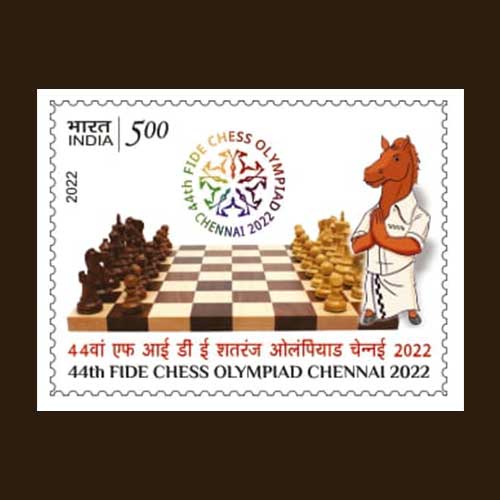Fascinating Archaeological Facts on Postage Stamps - 88
2025-08-21 Thu
Chess is one of the most ancient and intellectually stimulating cultural games known to humanity. The United Nations recognizes that this two-player strategy board game encompasses over 2,000 identifiable variants. Its significance is understood by the annual CELEBRATION of International Chess Day on JULY 20, commemorating the establishment of FIDE (Fédération Internationale des Échecs) in 1924. FIDE serves as the governing body connecting national chess federations and overseeing international chess competitions.India holds a prestigious position as the birthplace of chess. In his work "Indian Origins of Chess: An Overview" (2003), CP Bhatta references the earliest archaeological evidence of chess in India, which was identified by S.R. Rao in "Lothal and the Indus Civilization" (1972). During excavations at Lothal (Gujarat), artifacts resembling modern chess pieces were discovered, dating back to approximately 2450 BCE.
Similarly, Gotad et al. in "Gamesmen and Board Game Designs from Vadnagar" (2023) highlight the discovery of game pieces at the Vadnagar excavation that resemble components used in chess, such as pawns, Knights (Horses), rooks (elephants), and bishops. S.R. Rao also suggests in his publication "Lothal: A Harappan Port Town" (1985) that specific shapes such as castles, cones, zoomorphic Figures, and human forms may symbolize additional chess pieces, including the King, minister, elephant, horse, and chariot.
Furthermore, the Parasuramesvara temple in Gudimallam (Andhra Pradesh) constructed between the 2nd century BCE and the 2nd century CE displays evidence of chess-related imagery within its flooring.
The Historical significance of chess is also documented in ancient texts. Patanjali's "Mahabhashya" describes a board game consisting of 64 squares, referred to as ashtapada, translating to "eight squares." Banabhatta, a 7th-century Sanskrit poet, acknowledges the game of chaturanga played on an ashtapada board in his narrative "Harshacharita." This #game served as an educational tool for instructing young princes on Military divisions.
As trade connections between India and other regions expanded, chess gradually traversed the silkroad to PERSIA. The "Chatrangnamak" (7th to 8th century CE) recounts how an Indian king introduced this game to the #persian Shah Nausharwan I. Researchers Ferlito and Sanvito (1990) indicate that following the Arab conquest of Persia (634/651 CE), the game's name was adapted to "shatranj," reflecting the phonetic characteristics of the Arabic LANGUAGE, as the sounds for "ch" and "g" do not exist in #arabic. Chess further disseminated through the Mediterranean coast of #Africa during the Islamic expansion and subsequently reached Europe.
On 22 July 2022, India Post issued a stamp recognizing the 44th FIDE Chess Olympiad held in Chennai (Tamil Nadu). Presently, India boasts approximately 85 chess grandmasters, and in 2024, Grandmaster D. Gukesh became the youngest world chess champion.
Latest News
-
Antiochos I Soter Silver Tetradrachm, weighing 16.87 grams, sold for INR 22,000.
2025-10-07 TueAntiochos I, the Greek king of the Seleucid Empire, was of mixed heritage, being half-Iranian and ha...
-
Ghiyath Shah as Heir Apparent
2025-09-25 ThuGhiyath Shah was the ruler of the Malwa Sultanate, reigning from 1456 to 1500. From 1456 to 1469, he...
-
Malwa Sultan Mahmud Shah Silver Coins
2025-09-11 ThuMalwa Sultan Mahmud Shah minted silver coins in round and square flans. <br><br> For round coins,...
-
Malwa Sultan Mahmud Shah Billon coin
2025-08-26 TueMalwa Sultan Mahmud Shah's billon coins followed three weight standards: 100 rati, 96 rati, and 80 r...
-
Fascinating Archaeological Facts on Postage Stamps - 91
2025-08-23 SatRhinoceros is one of the oldest land mammal species existing in India. There are five species of rhi...

